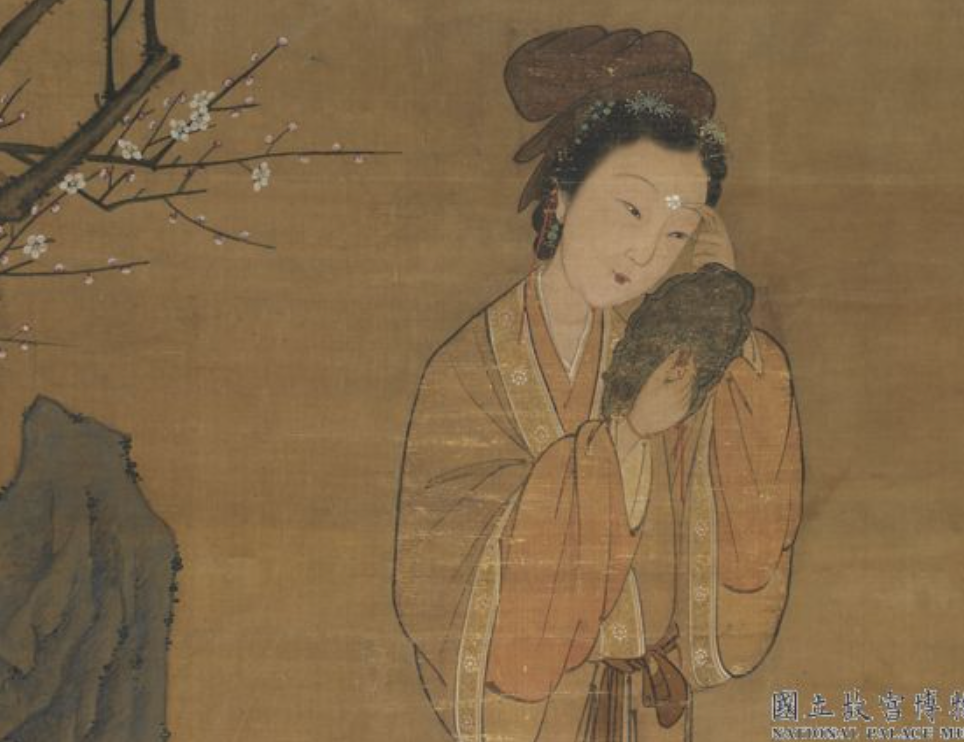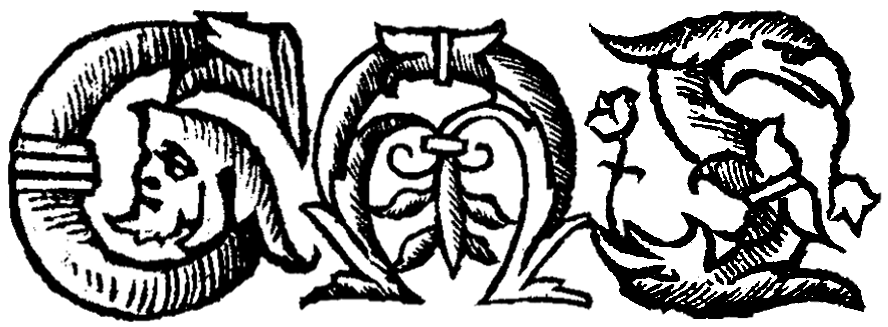To the tune “Always Having Fun”—“The setting sun is like melted gold” | 永遇樂 · 落日鎔金

Detail from 元人畫梅花仕女(Woman by Plum Blossom) 軸, Anonymous, National Palace Museum, Accession Number: K2A000362N000000000PAA [Public Domain]
Read the text (PDF)
Introduction to the Text
Li Qingzhao composed this ci in later life, when she had already moved to the south following the invasion of the former capital, Kaifeng. The poet-speaker reminisces about life in the old capital and expresses ambivalence about the new situation of the Song dynasty, and her place within it.
The ci genre of Chinese poetry first emerged in the Sui dynasty (581-619), was further developed in the Tang dynasty (618-907) and matured in the Northern Song dynasty (960-1127). Ci is usually translated into English as “song lyrics”. This is because ci were composed by poets to fit pre-existing tunes. The number of lines, the line lengths, and the tonal and rhythmic patterns of ci vary with the tunes, which number in the hundreds. One common occasion for composing ci would be a banquet: song lyrics would be scribbled down by guests and then sung by musical performers as entertainment. Other occasions for composing and enjoying ci would be more casual: the poet might sing the lyrics to himself at home or while travelling (many ci poets were civil servants of the Imperial Court and often had to travel great distances to carry out their work). Sometimes the lyrics would be sung by ordinary people in the same way as folk songs. This oral and musical quality sets it apart from other genres of poetry in China during the same period, which were largely written texts with more elevated objectives. There are two main types of ci : wǎnyuē (婉 约, “graceful”) and háofàng (豪放, “bold”). The wǎnyuē subgenre primarily focuses on emotion and many of its lyrics are about courtship and love, while the háofàng subgenre often deals with themes that were considered more profound by contemporary audiences, such as ageing and mortality, or the rewards and disappointments of public service.
Li Qingzhao was probably one of the most prominent female poets in Imperial China. Born into an elite family of imperial bureaucrats, Li Qingzhao aspired to become a writer even though literature was considered a male domain. She quickly gained fame for her poetic talent and became not only a celebrated composer of ci but also an important critic of the genre. In her view, the male poets composing lyrics for female singers struggled to convey these women’s thoughts and voices convincingly. In her song lyrics, Li Qingzhao offers the modern reader something rare and precious: the inner world of women in medieval China, as imagined by a woman poet. Her songs are often considered to be among the most affecting of the genre.
In 1127, when Li Qingzhao was in her forties, the capital city of the Song dynasty (present-day Kaifeng)—the city where Li Qingzhao lived—was conquered by the Jin dynasty in the Jin-Song Wars, along with the northern half of the Song dynasty’s territory. The surviving members of the dynasty consolidated their regime in the south, establishing a new capital city, first in Nanjing, then in Lin’an (present-day Hangzhou). The conquest of Kaifeng marked the end of the Northern Song dynasty and the beginning of the Southern Song dynasty: two distinct eras in the political history of China, and two distinctive periods in Li Qingzhao’s own poetry. Following the invasion of Kaifeng, she moved first to Nanjing and then to Lin’an, where she spent the remaining decades of her life; her husband died in 1129. In contrast to the love themes of her earlier ci, much of her later poetry is concerned with the sorrow of her forced migration and her personal loneliness in her new surroundings.
About this Edition
The original text of this ci is based on the edition by Tang Guizhang 唐圭璋 ( Quan Song Ci 全宋詞, vol 1. Beijing: Zhonghua shu ju, 1965). Punctuation follows the edition. Since ci poetry rarely includes personal pronouns, and gender-differentiated pronouns did not exist in Classical Chinese of this period, the gender of the speaker as well as their perspective (e.g. first-, second- or third-person) must often be deduced by the translator from context.
Further Reading
Chang, Kang-i Sun. The Evolution of Tz’u Poetry: from Late Tang to Northern Sung. Princeton UP, 1980.
- A standard survey of the early history of Chinese song lyrics (romanized as both ci and tz’u).
Egan, Ronald. “The Song Lyric”. The Cambridge History of Chinese Literature, vol. 1, edited by Stephen Owen, Cambridge UP, 2010, pp. 434-452.
- An overview of the genre.
The Works of Li Qingzhao. De Gruyter, 2019, pp. 94-198.
- A bilingual edition, with Chinese and English translations on facing pages.
Owen, Stephen. Just a Song: Chinese Lyrics from the Eleventh and Early Twelfth Centuries. Asia Center, Harvard UP, 2019.
- A recent new history of the genre.
Tang, Guizhang 唐圭璋, editor. Quan Song Ci 全宋詞. Zhonghua shu ju, 1965. 5 vols.
- A comprehensive edition of ci from the Song dynasty and the source text for the ci in this collection (introductions and annotations are in Chinese).
To the tune “Always Having Fun”—“The setting sun is like melted gold” | 永遇樂 · 落日鎔金
永遇樂
落日鎔金,
暮雲合璧,
人在何處。
染柳煙濃
5 吹梅笛怨,
春意知幾許。
元宵佳節,
融和天氣,
次第豈無風雨。
10 來相召、
香車寶馬,
謝他酒朋詩侶。
中州盛日,
閨門多暇,
15 記得偏重三五。
鋪翠冠兒,
撚金雪柳,
簇帶爭濟楚。
如今憔悴,
20 風鬟霜鬢,
怕見夜間出去。
不如向、
簾兒底下,
聽人笑語。
To the tune “Always Having Fun”
The setting sun is like melted gold;
the evening cloud circles the jade disc.
Where do I find myself?
The willows are tinted with heavy mist;
5 the flute plays the regretful tune “Plum Blossoms Fall.”
Who knows how much spring feeling is left?
It is the First Full Moon Festival.
The weather is nice and balmy,
but how will there not be wind or rain in an instant?
10 Someone invited me,
sending a fragrant carriage and fine horses;
yet I refused to be his companion for wine and songs.
In the glorious days in the Middleland,
there was so much leisure in the women’s quarters.
15 I remember how Three Five was grandly celebrated
The kingfisher-feather caps,
the gold thread wrapping the snowy willows,
all kinds of hair ornaments, competing with one another in gorgeousness.
Now I am haggard and sallow,
20 With wind-blown hair and frost-touched temples.
I refrain from going out at night.
It is better to
hide behind the lowered curtains,
listening to the talk and laughter of others.
Critical Notes
Line 13: This is a typical reference to the territories of the Northern Song dynasty. In this case the Middleland specifically refers to the capital of the Northern Song dynasty, Bian Jing (now Kai Feng City in Henan Province, China).
Line 15: “Three Five” refers to the fifteenth day of the first month in the lunar calendar, which is the First Full Moon Festival.
